2025 PEREGRINE WATCH SEASON
We are glad to report that there were successful peregrine fledgings from the Bonticou and Millbrook nest sites. Unfortunately, this year’s peregrine falcon nest at the Trapps did not succeed. Peregrine nests can fail for multiple reasons, including predation, temperature changes and human or animal disturbance, and our Patrol Rangers and Peregrine Watch team are assessing the Trapps eyrie.
As a result of this development, we will be removing the temporary climbing restrictions in the Trapps starting Thursday, July 3, 2025.
We thank our dedicated Conservation Science staff and Peregrine Watch participants for their diligent observations of the peregrine sites and the climbing community for their patience and support of our efforts to protect these amazing falcons.
Based on our experience, current scientific research and raptor protection strategies of conservation partners, the Preserve will continue applying a responsive management approach each year during the early breeding season to optimize successful eyrie (cliff nest) site selection. Click here to learn more about peregrines on the Shawangunk Ridge.
Peregrine Watch Observations
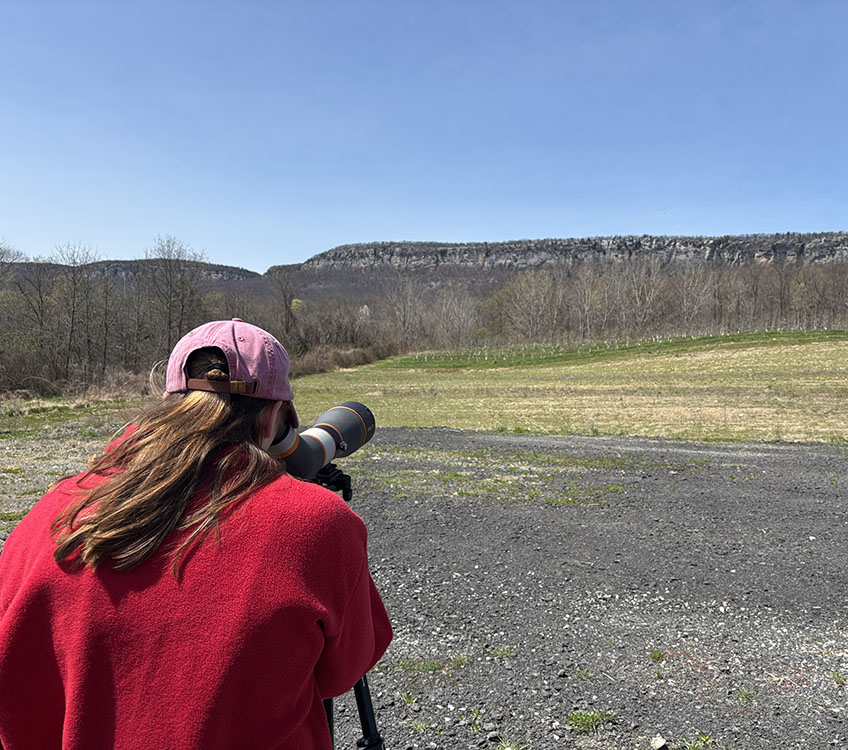
7.3.25 – Peregrine Watch Update: Temporary Trapps Closure Lifted
Through diligent observations, our Conservation Science staff and Peregrine Watch participants are happy to report that there were successful peregrine fledgings from the Bonticou and Millbrook nest sites.
Unfortunately, this year’s peregrine falcon nest at the Trapps did not succeed. As a result of this development, we will be removing the temporary climbing restrictions in the Trapps starting Thursday, July 3, 2025. Thank you to our dedicated Conservation Science staff and Peregrine Watch participants!
6.12.25 – Preserve Peregrine Cam
Two growing peregrine falcon chicks and a watchful parent are seen in their rocky eyrie.
The chicks are developing quickly, with their juvenile feathers coming in and their appearance darkening each day. As they continue to shed their soft down feathers, they’re getting closer to a major milestone: their very first flight—known as fledging.
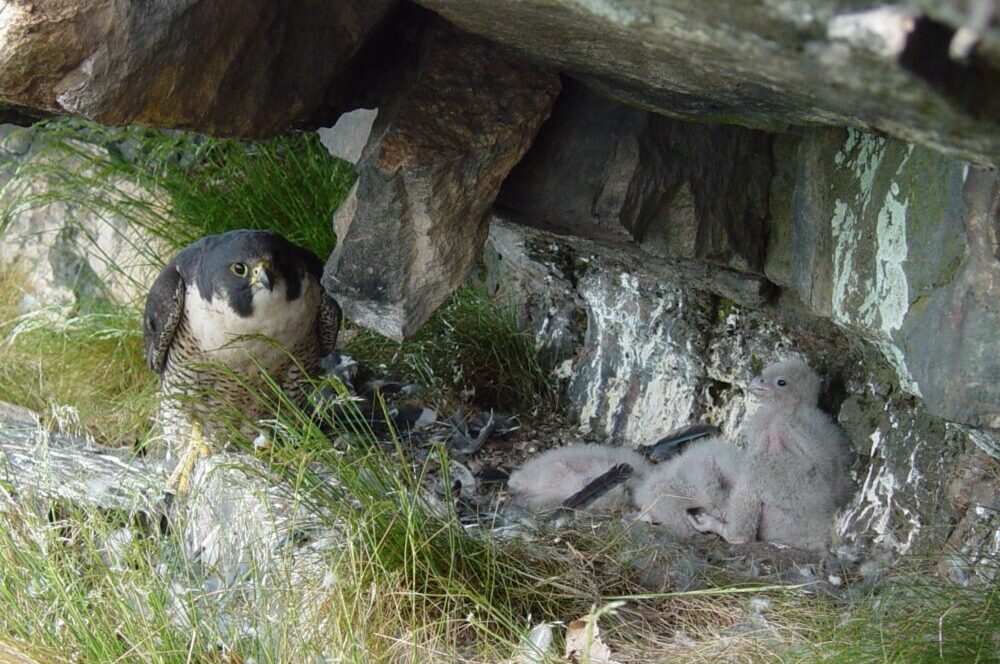
5.22.25 – Peregrine Watch
At the Millbrook cliff, one chick has been observed and is estimated to be between 16-20 days old. At the Bonticou cliff, two chicks have been observed and are estimated to be between 19-23 days old. At the Trapps cliff, we continue to observe territorial behavior around the eyrie but have not confirmed chicks yet. This is unsurprising as the Trapps peregrine pair started their current breeding attempt a little later than the other pairs. Peregrine falcon chicks typically stay in the eyrie until they are about 40 days old upon which they are ready to take their first flight. As they learn to fly, they will stay near the eyrie and the parents will continue to provide food for them. While not all peregrine falcon chicks may survive to fledging, our Conservation Science team and Peregrine Watch Volunteers will continue to closely monitor the cliffs for any changes or signs of concern. Learn more about peregrine falcon chicks here.
5.21.25 – Preserve Peregrine Cam
We’re thrilled to announce that baby peregrine falcons have hatched in the Gunks! Our Peregrine Watch program has confirmed the presence of eyases, peregrine falcon chicks, at Mohonk Preserve. In this video, two chicks have been observed and are estimated to be between 19-23 days old.
4.29.25 – Preserve Peregrine Cam
Tune in to see some peregrine falcon action on the Shawangunk Ridge!
4.22.25 – Preserve Peregrine Cam
Blink and you might miss it! The peregrine falcon is renowned for its incredible speed, particularly during its hunting stoop, which is a controlled dive where the bird plunges from great heights to capture prey in the air, reaching speeds of over 200 mph.

4.17.25 – Peregrine Watch: Observation at the Trapps
A pair of peregrine falcons have been observed perching on an eyrie in the Shawangunk Ridge. Peregrine falcon perching behavior signifies several things, including hunting, courtship and general rest. They often perch on high vantage points to scan for prey, and during the breeding season, perching together indicates potential mating pairs.
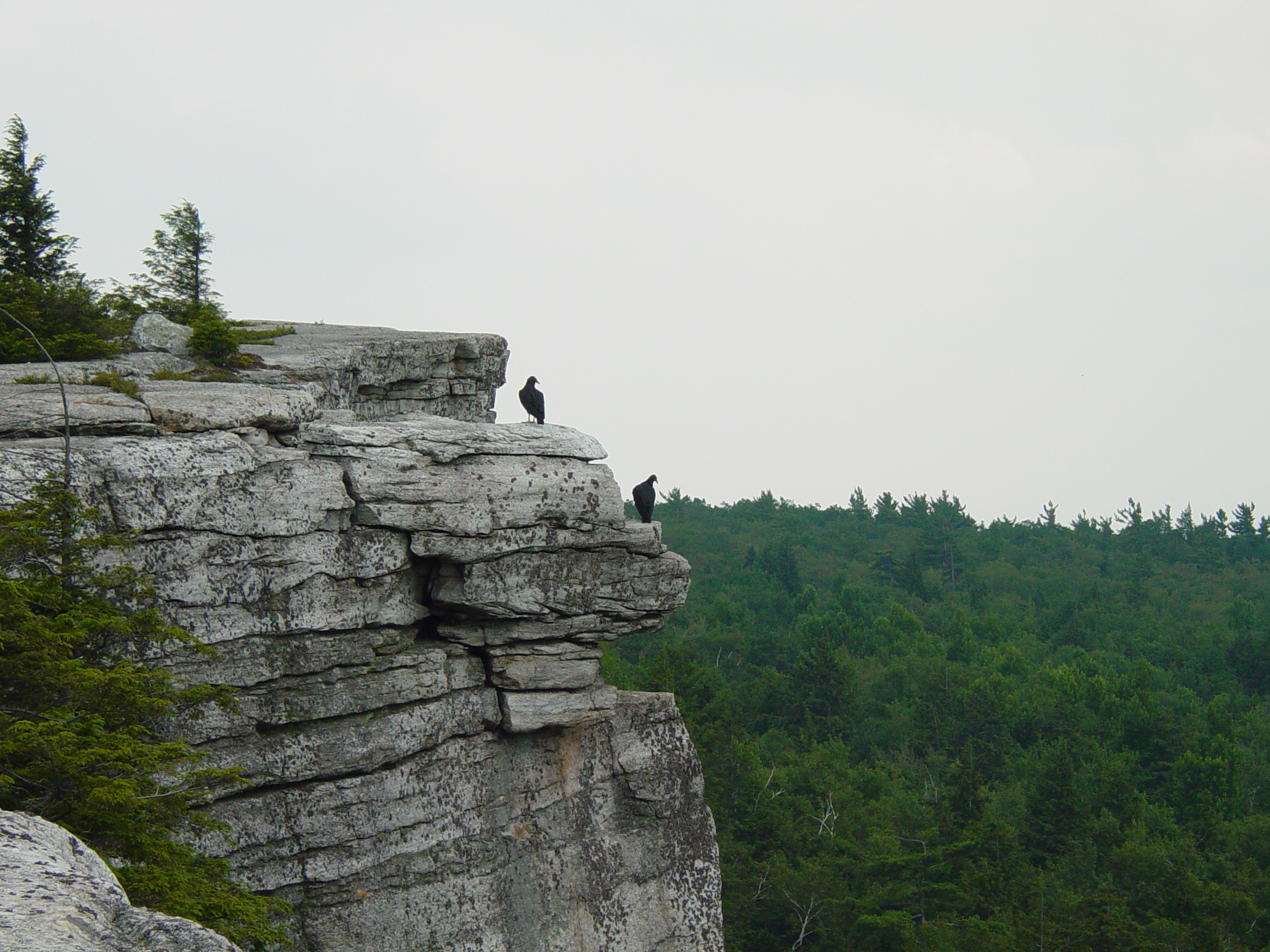
4.15.25 – Peregrine Watch: Observation at the Trapps
Our Peregrine Watch volunteers recently observed a female peregrine falcon dive-bombing vultures, likely in defense of a favored perching spot. Both species frequent the cliffs high above the treetops, which often brings them into close proximity. These overlapping territories can lead to dramatic interactions, as peregrine falcons are highly territorial. Our volunteers also watch for vultures, as their presence often signals the potential for territorial displays from peregrine falcons.
4.8.25 – Preserve Peregrine Cam
Tune in to hear from some locals on the Shawangunk Ridge! Peregrine falcons vocalize for various reasons to communicate and coordinate behaviors like defense of territory, breeding and hunting food.
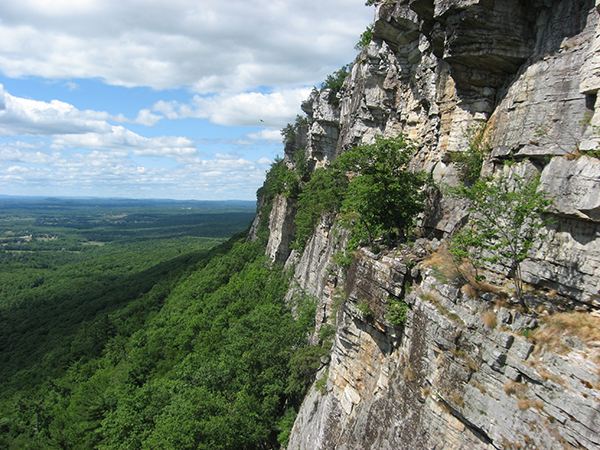
4.4.25 – Peregrine Watch: Observation at the Trapps
Love is in the air! Possible copulation was observed in the Trapps by Associate Director of Conservation Science & Research Megan Napoli. Peregrine Activity occurred regularly throughout the morning observation where a male and female peregrine falcon were seen flying around and checking out multiple cracks in the rock faces, potentially seeking out an eyrie.
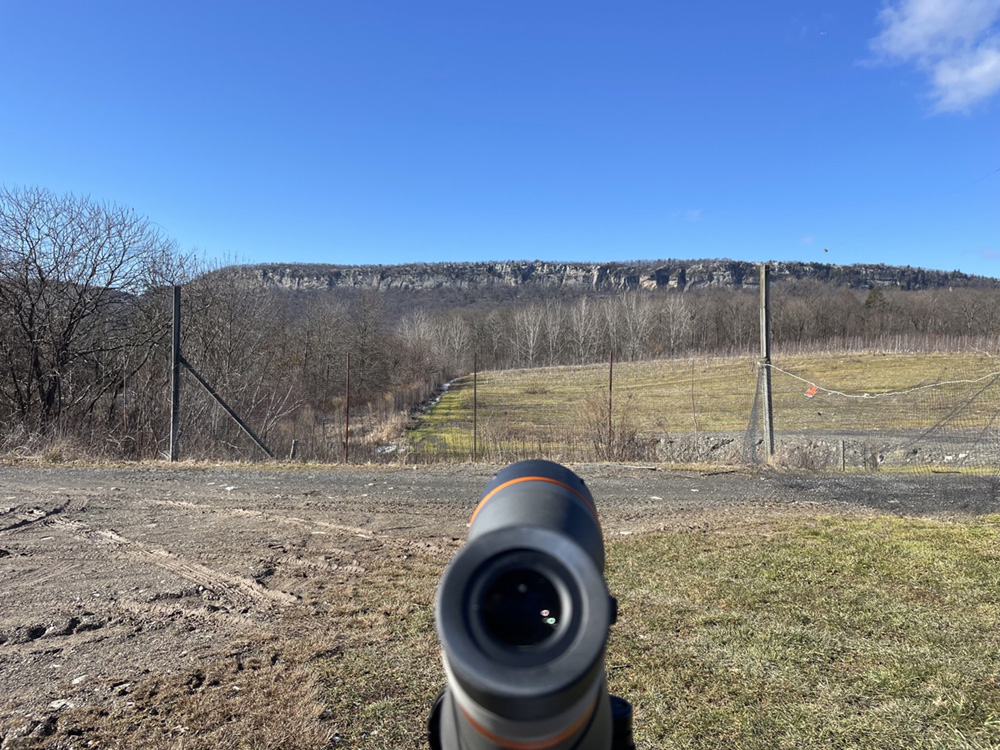
3.11.25 – Peregrine Watch: Observation at the Trapps
Two peregrine falcons were seen flying and then later perched on an eyrie in the Trapps by Associate Director of Conservation Science & Research Megan Napoli.
5.14.24 – Preserve Peregrine Cam: Footage shows a peregrine falcon vocalizing in the Shawangunk Ridge.
This peregrine is “ee-chupping.” Ee-chup is a peregrine-to-peregrine vocalization. Because this sounds like a “whisper call” or a softly vocalized call, it’s likely these peregrines are communicating in a friendly way to each other. Perhaps the peregrine staying in the eyrie is communicating to their partner something along the lines of, “have a nice flight” or “bring me back a tasty morsel!”
4.8.24 – Preserve Peregrine Cam: Two peregrine falcons are seen feeding on a northern flicker in the Shawangunk Ridge.
3.14.24 – Preserve Peregrine Cam: Tune in with your sound on for some peregrine falcon calls! This footage shows a pair of peregrine falcons on an eyrie in the Shawangunk Ridge talking to one another. Falcons will use various different calls to signal their presence to potential mates, communicate needs to their partners or to establish territory.
2.5.24 – Preserve Peregrine Cam: A peregrine falcon takes flight off an eyrie on the Shawangunk Ridge. Did you know the peregrine falcon is considered the fastest member of the animal kingdom? Peregrine falcons are very fast fliers, reaching speeds up to 69 mph in direct pursuit of prey and 200 mph when hunting from high above! These amazing high-speed dives are called hunting stoops.
1.16.24 – Preserve Peregrine Cam: A peregrine falcon preening their feathers to keep them clean.
